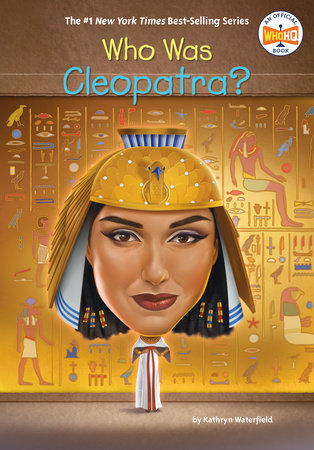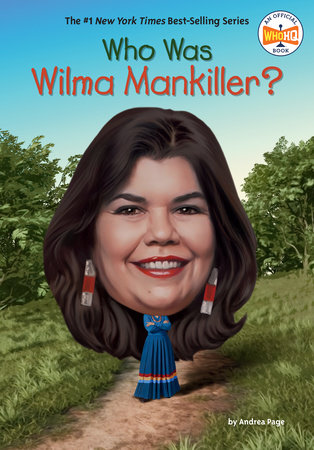Excerpt
Who Was Katherine Johnson?
Who Was Katherine Johnson?On July 20, 1969, like millions of other Americans, Katherine Johnson was excitedly staring at a television screen. But she wasn’t just any viewer—she was a brilliant mathematician who played a key role in what was about to happen.
Katherine worked at the National Aeronautics and Space Administration (NASA), the place where space missions are planned. Astronaut Neil Armstrong and his crew had launched into space several days before and were heading for the moon. Katherine and her colleagues had done tons of calculations to ensure the mission would be a success. If everything went correctly, the United States would be the first country to put a person on the moon! As the rocket roared into the sky, Katherine hurried to join her sorority sisters from Alpha Kappa Alpha who were gathered at a hotel in the Poconos, Pennsylvania, for a convention.
When the lunar module, called the Eagle, landed on the moon, everyone held their breath. Then, over the speakers, they heard Neil say, “The Eagle has landed.” The room instantly became filled with cheers and happy screams. Katherine and her sorority sisters couldn’t believe it—they had just witnessed history!
At 10:56 p.m. EST (Eastern Standard Time, the time zone that covers the eastern part of the United States, Canada, and parts of the Caribbean and Central America), the whole world watched as Neil took his first steps on the moon, saying, “That’s one small step for man, one giant leap for mankind.” Katherine knew that behind that giant leap was a lot of hard work from Black mathematicians like her.
Katherine wasn’t just proud of the moon landing. She was proud of her part in it. She once said, “We were the pioneers of the space era,” and pointed out that “everything is physics and math,” reminding future scientists that the universe is full of numbers just waiting to be discovered.
After the mission, the news of this incredible achievement spread across the nation and the world. On July 24, 1969, at 12:50 p.m. EST, Neil and his fellow astronauts splashed down safely into the Pacific Ocean, not far from Honolulu, Hawaii. They were back home, and so was Katherine, both eventually becoming celebrated as American heroes.
Chapter 1A Curious ChildhoodKatherine Coleman was born to Joylette Roberta Lowe and Joshua Coleman. Joylette, who grew up in Danville, Virginia, suffered from serious allergies as a young girl, so at age eighteen, she moved to White Sulphur Springs, West Virginia. She hoped the new city would bring great job opportunities and cleaner air. Not only did she find a job as a schoolteacher, but she also met a tall, handsome man named Joshua Coleman.
Joshua—who always wore a stylish Stetson hat—got a lot of attention from the women in town, who thought he was a good catch, but he only had eyes for Joylette. They dated for a few years and got married in 1909. The young couple moved into Joshua’s log cabin on the farm he had inherited, just seven miles outside White Sulphur Springs in an area called Dutch Run. Joylette loved teaching, but she stopped in 1912 when she gave birth to their first child, a son named Horace. Two years later, they had their first daughter, Margaret, followed by another son, Charlie. Katherine, who was born in 1918, would be the couple’s last child.
Joshua was a great provider who worked as a farmer and horseman, and he could build anything, including houses. He was so naturally good with numbers that he didn’t use a measuring tape when he was building. He could look at the construction plans and determine the amount of wood that was needed. And he shared his love of numbers with his children.
The Colemans were very happy living on the farm, but they wanted to give the kids a chance to learn with other students. They knew Joylette could not teach the children at home forever.
So around 1922, the family moved to White Sulphur Springs and Joshua built them a big white house in town. They loved their new home, which had running water and a bathroom.
Joshua found a good job at the Greenbriar Hotel while Joylette took care of the chores in the house. She also taught Katherine when the older siblings attended White Sulphur Grade School. Much like her father, Katherine was very smart and very good with numbers. She walked from room to room in their house counting everything because she was so eager to learn. If Katherine’s mother turned her back for one minute, Katherine would sneak out of the house and go to the two--room school. Joylette would find Katherine sitting beside one of her siblings in class with a big smile on her face.
But as the Coleman children got older, they were faced with a problem. Once they finished grade school, they would not have a high school to attend. Katherine’s parents wanted their kids to have the same opportunities as other children, so they sent Horace and Margaret to the town of Institute, West Virginia, to attend West Virginia Collegiate Institute. The school was founded in 1891 as a high school for Black students that also provided vocational and teacher training, but it started offering college degrees in 1915. The Coleman children now had the opportunity to attend high school and college.
But why was it so difficult for Katherine and her siblings to go to school?
The school was 127 miles from White Sulphur Springs, and the Colemans were not happy to be so far away from their older children. When it was time for Charlie to leave, the Colemans made another hard decision. Joshua decided to sell his family’s farm in Dutch Run so they would have money for the entire family to move to Institute.
When they arrived in Institute, they lived with Joylette’s cousin for a little while and eventually rented a house directly across the street from campus. The Colemans loved being near all their children. They were happy to know that their children would be attending West Virginia Collegiate Institute, which was renamed West Virginia State in 1929 under the leadership of their new president, Dr. John Warren Davis.
Katherine’s older siblings were all enrolled in high school; she enrolled in the primary school nearby, where she was an excellent student.
Joshua soon realized that he would have to move back to the big white house in White Sulphur Springs because he could not find a job in Institute that paid enough to cover their bills and school tuition. They also wanted to save money for their children to go to college. Joshua missed his family, so he traveled back to Institute on weekends whenever he could.
To earn extra money to help the family, Joylette and Margaret started ironing clothes for white people attending the institute. Horace and Charlie got a newspaper route and delivered milk. Little Katherine was too young to work, so she wrote letters to their father to tell him everything that was going on in Institute.
It was a difficult time for the family, but their hard work was paying off. They were smart children. Katherine was so smart that as the years passed, the principal let her skip first grade. She also skipped seventh grade. When Katherine was only ten years old, she started high school.
Katherine was very active in high school. As she approached her teen years, she spent more time on campus, even after school. She learned to play tennis and started taking piano and French lessons.
Her math teacher, Mrs. Evans, noticed how good she was with numbers and took a special interest in Katherine. Mrs. Evans, who was married to the head of the college’s math department, Dr. James Evans, often invited Katherine and her friend Constance Davis, who Katherine called Dit, over for tea. Constance and her sister Dorothy were the daughters of the college’s president.
By Katherine’s senior year, all of her teachers were encouraging her to focus on math and become a math teacher. At fifteen years old, she graduated from high school.













